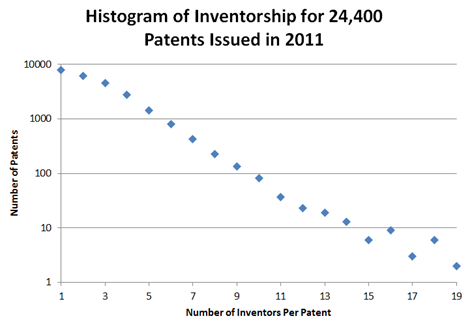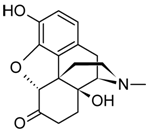By Jason Rantanen
Global-Tech Appliances, inc. v. SEB S.A. (2011) Download Global-Tech v SEB
Majority: Alito (author), Roberts, C.J., Scalia, Thomas, Ginsburg, Breyer, Sotomayor, Kagan. Dissent: Kennedy.
In an 8-1 decision this morning, the Supreme Court affirmed the result in Global-Tech v. SEB, holding that while inducement of infringement of infringement requires knowledge that the induced conduct itself infringes, that knowledge element can be met by a showing of "willful blindness." In reaching this conclusion, the Court rejected the Federal Circuit's adoption of a "deliberate indifference" standard. By endorsing a "willful blindness" approach to knowledge – which Justice Kennedy's dissent indicates is a novel move – this opinion may have profound implications well beyond the area of intellectual property law.
Inducement of Infringement Requires Knowledge That the Induced Acts Constitute Patent Infringement
The Court first held that, like contributory infringement, inducement of infringement requires that the accused inducer know that the third party's conduct constitutes an infringement. This is separate from any intent required to produce the acts themselves (i.e.: making, using, offering to sell, selling, or importing of a patented invention). After recognizing that there are two conflicting interpretations of 35 U.S.C. § 271(b), the court looked to inducement's common origin with contributory infringement (which the Court in Aro Mfg. Co. v. Convertible Top Replacement Co., 377 U. S. 476 (Aro II) held required knowledge of infringement) and concluded that the same knowledge requirement applies to inducement:
Based on this premise [that contributory infringement requires knowledge of infringement], it follows that the same knowledge is needed for induced infringement under §271(b). As noted, the two provisions have a common origin in the pre-1952 understanding of contributory infringement, and the language of the two provisions creates the same difficult interpretive choice. It would thus be strange to hold that knowledge of the relevant patent is needed under §271(c) but not under §271(b).
Knowledge Requirement Satisfied by Willful Blindness
Turning to the question directly presented by the case, the Court further held that while deliberate indifference does not satisfy the knowledge required for § 271(b), willful blindness does. In reaching this conclusion, the Court looked to criminal law, which holds that defendants cannot escape the reach of the law by deliberately shielding themselves from clear evidence of critical facts that are strongly suggested by the circumstances.
Willful blindness exists when two requirements are met. First, "the defendant must subjectively believe that there is a high probabilty that a fact exists." Slip Op. at 13. Second, "the defendant must take deliberate actions to avoid learning of that fact." Id. According to the Court, "[t]hese requirements give willful blindness an appropriately limited scope that surpasses recklessness and negligence." Slip Op. at 14. Furthermore, "[u]nder this formulation, a willfully blind defendant is one who takes deliberate actions to avoid confirming a high probability of wrongdoing and who can almost be said to have actually known the critical facts." Id. "By contrast, a reckless defendant is one who merely knows of a substantial and unjustified risk of such wrongdoing, see ALI, Model Penal Code §2.02(2)(c) (1985), and a negligent defendant is one who should have known of a similar risk but, in fact, did not, see §2.02(2)(d)."
While this was not the test applied by the Federal Circuit, the Court concluded that the evidence, when considered under the appropriate standard of review, met its willful blindness standard. In reaching this conclusion, the Court looked to the Pentalpha's decision to copy all but the cosmetic features of SEB's fryer; its decision to copy an overseas model of SEB's fryer, and its decision not to inform its attorny that the product "was simply a knockoff of SEB's fryer."
Justice Kennedy: Inducement Should Require Actual Knowledge
Writing in dissent, Justice Kennedy would have held that willful blindness is insufficient to satisfy the knowledge requirement of inducement. "Willful blindness is not knowledge; and judges should not broaden a legislative proscription by analogy." Kennedy Dissent at 1. In particular, the Justice disagreed that the Court had a long precedent of invoking the doctrine of willful blindness as constituting knowledge in the criminal context. "[T]his Court has never before held that willful blindness can substitute for a statutory requirement of knowledge." Dissent at 3.
Following from this, Justice Kennedy warns of the enormous ramifications Global-Tech may have:
The Court appears to endorse the willful blindness doctrine here for all federal criminal cases involving knowledge. It does so in a civil case where it has received no briefing or argument from the criminal defense bar, which might have provided important counsel on this difficult issue.
There is no need to invoke willful blindness for the first time in this case. Facts that support willful blindness are like these tend to be the only available evidence in any event, for the jury lacks direct access to the defendant’smind. The jury must often infer knowledge from conduct,and attempts to eliminate evidence of knowledge may justify such inference, as where an accused inducer avoids further confirming what he already believes with good reason to be true. The majority’s decision to expand the statute’s scope appears to depend on the unstated premisethat knowledge requires certainty, but the law often permits probabilistic judgments to count as knowledge.
Dissent at 3-4.
 The point of this post is to highlight the upcoming three-day Chisum Patent Academy that Professors Chisum and Mueller will be team-teaching July 25–27 in Seattle Washington. The course is an intense focus on current patent law and its nuances. If anyone has had Chisum or Mueller for classes, then you know that they are both excellent teachers and this looks to be an excellent program.
The point of this post is to highlight the upcoming three-day Chisum Patent Academy that Professors Chisum and Mueller will be team-teaching July 25–27 in Seattle Washington. The course is an intense focus on current patent law and its nuances. If anyone has had Chisum or Mueller for classes, then you know that they are both excellent teachers and this looks to be an excellent program.
 When the Patent Act became law in 1952, the inventive process may have largely paralleled the language of the statute – namely, the vast majority of patents were each associated with a single respective inventor who took a step beyond the ordinary. In that year (1952), 82% of patents listed only one inventor and a mere 3% listed three or more inventors.
When the Patent Act became law in 1952, the inventive process may have largely paralleled the language of the statute – namely, the vast majority of patents were each associated with a single respective inventor who took a step beyond the ordinary. In that year (1952), 82% of patents listed only one inventor and a mere 3% listed three or more inventors.  In re Kao, ___ F.3d ___ (
In re Kao, ___ F.3d ___ (